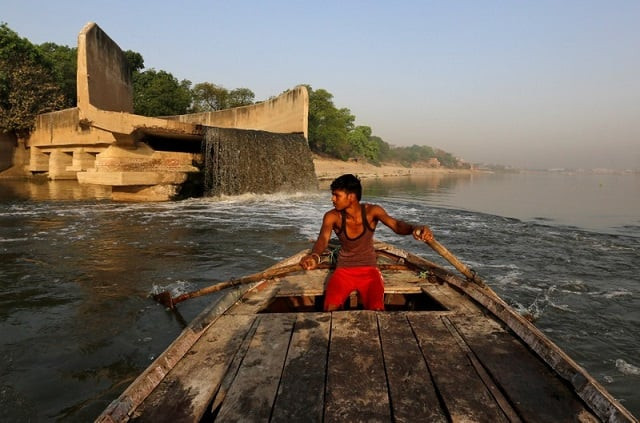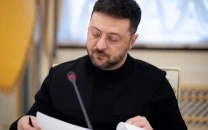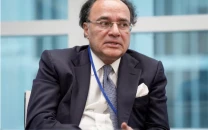India's federal auditor slams Modi's slow Ganges clean-up
The Ganges is arguably one of the most revered rivers in the world - and one of the most polluted

FILE PHOTO: Untreated sewage flows from an open drain into the river Ganges in Kanpur, India, April 4, 2017.
PHOTO: REUTERS
The government had only used $260 million of the $1.05 billion earmarked for the National Mission for Clean Ganga (NMCG) programme between April 2015 and March 2017, according to the report from the Comptroller and Auditor General of India. The water quality in eight of 10 towns surveyed along the Ganges did not meet outdoor bathing standards.
"The performance audit revealed deficiencies in financial management, planning, implementation and monitoring, which led to delays in achievement of milestones," the auditor said in its 160-page report which was presented to parliament last week. The water resources ministry, which runs the NMCG, did not respond to a request for comment.
Prime Minister Narendra Modi's administration committed $3 billion in 2015 for a five-year project to clean the 2,525-km river that remains heavily polluted despite being a water source for 400 million people. Modi, who represents the holy city of Varanasi on the banks of the Ganges, had made a clean-up of the Ganges one of his key campaign promises in the 2014 presidential election.
Sunken pipelines inundate Karachi’s streets with sewage water
The Ganges is arguably one of the most revered rivers in the world - and one of the most polluted. It is worshipped by Hindus, who make up about 80 per cent of India's 1.3 billion people.
They call it Ganga Mata, or mother Ganga, and believe a dip in the river absolves a lifetime of sins. But the river, which stretches from the Himalayas to the Bay of Bengal, is also a destination for waste produced by hundreds of factories - over three-quarters of the sewage generated in the towns and cities of India's crowded northern plains flows untreated into the Ganges.
When a Reuters reporter visited northern Kanpur city in March, the river in most parts of the town appeared black in colour, with its many factories and tanneries dumping waste into the Ganges. The federal auditor's report contained pictures of untreated sewage being discharged directly into the river in several states.
Sewage treatment plants
The NMCG had set a target to award contracts for all sewage treatment plants by last year, but even by August this year it hadn't approved projects to treat nearly 1,400 million litres of sewage daily, the report said.
"Without stopping sewage going into the river, we cannot imagine a clean Ganga. That should be the top priority," said Rakesh Jaiswal, head of a Ganges-focused environmental group in Kanpur since 1993. "(The report) is a sad commentary on the government's efforts to clean the river."
China says more than 18,000 officials failed or performed badly in protecting environment
The NMCG told the auditor the sewage treatment problem would be resolved to an extent once projects under construction are completed, but it remained 'silent' about its failure to meet its targets, the auditor's report said. Modi has been concerned about the slow pace of the Ganges clean-up drive and his personal secretary had demanded regular updates from project officials to track its progress, Reuters reported in April. Modi's office didn't respond to a request for comment.
India had set a 2018 deadline to clean the river, but local media in October quoted the government's new water resources minister as saying that the Ganges' water quality will likely only improve by March 2019. Environmentalists doubted that.
"Meeting the (2019) target seems to be very difficult," said Sushmita Sengupta of the New Delhi-based Centre for Science and Environment. "Nothing has been done in a constructive way on the ground."


















COMMENTS
Comments are moderated and generally will be posted if they are on-topic and not abusive.
For more information, please see our Comments FAQ